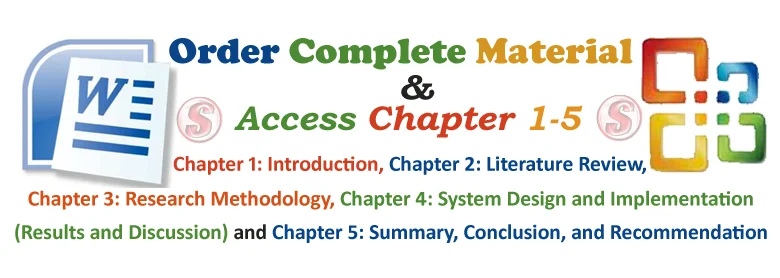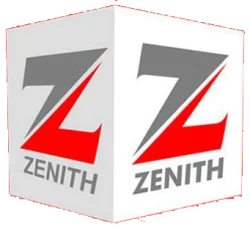1.1 Introduction
Real estate can be defined as an area or amount of land or property. Estate management is quite a broad term for a number of areas that include property management, surveying, business and finance and the built environment. Closer ties are beginning to emerge between estate and property management and business and financial practices, and essentially the subject is primarily concerned with the valuation and management of land and buildings in the public and private sector. Estate Managers typically set the service standard and are responsible for the hiring, training, and ongoing management of staff required to meet the service needs of the household. This crisis has come about because of the rise in house prices which first-time buyers can no longer afford and a lack of affordable housing for the citizens. Also, the rise in investment buyers has meant that a lot of properties that those on average wages could have once been able to buy, now have to rent instead. The government has predicted that more homes are needed, but where these houses are to be built has also courted controversy.
As a prelude to other parts of this study, this chapter will discuss the background upon which this study was initiated, the statement of problems that led to this study, the Aim and Objectives of the study. Others are Significance of the study, Scope of work, Limitations of the Study and Definition of technical terms.
1.2 Background of Study
Real estate has continued to play a significant role in man’s evolution. It is not a coincidence that food, shelter and clothing believed to be the three essentials that sustain mankind, also have some linkage to land. Food grows out of land while shelter is affixed to it, and man’s clothing is made largely from what grows out of land. Indeed, whether in ancient times or today’s modern system land constitutes a significant index for man’s wealth and as economic activities have assumed more sophistication over time, land has continued to play a central role in their development. There is hardly any business venture that does not require to be supported by some form of real estate or estate management, from the small business that requires real estate as offices from where its business can be organized, to the major venture that needs it for its factory. Economics and management studies have long established that production is dependent on four factors, out of which land is one, along with labour, capital and entrepreneur. It therefore simply stands to reason that to be true to his professional responsibility every commercial/business lawyer ought to have a proper grasp of estate management practice or real estate law. The client needs advise on this in one form or the other, for land.
Elementary economics teaches us that where there is a lot of demand, prices are bound to go up. What has further complicated the graph is the fact that, although a natural endowment, land is not finite. It accounts for only 20% of the whole surface of the earth. Consequently, against this backdrop major economics, through some very robust and well thought out land policies comprehensively address challenges they encounter in the real estate sector. This is not exactly our situation here in Nigeria and the result is that there is a myriad of problems in our real estate sector. Only very recently the minister of the federal capital territory announced the withdrawal of certificates of occupancy in the federal capital territory. Whether for good or bad, this is not intended have to pass judgment over this ministerial pronouncement. Rather, the aim is to draw attention to, and highlight some of the problems that are encountered in our estate management sector. In the course of this paper, the phrases “real estate”, “estate management” and “land” will be used interchangeably. After all, although not exactly synonymous, yet in its connotations, real estate means some connection to land.
The study, computer application in estate management practice in Nigeria, will be restricted to the real estate practice profession. Estate management is the direction and supervision of an interest in landed property. Landed property in this context includes real estate, which connotes property that is not moveable; such property includes land, building, structures, and river basin etc. computer evolved from the ancient use of counting with sticks, the use of the abacus, calculators and later, other form of electric computer. This project however be concerned with modern computer with such applications as the micro processor, e-mail, internet. The study covers such estate management function as property search etc.
In addition to personnel management, the administrative functions are many. All related financial matters including accounting, budgets, and payroll normally pass through the estate manager’s hands. Based on the size of the property, the Estate Manager may wear many other hats. Depending on the nature of the property, an owner of property has the right to consume, sell, rent, mortgage, transfer, exchange or destroy their property, and/or to exclude others from doing these things. A title, or a right of ownership, establishes the relation between the property and other persons, assuring the owner the right to dispose of the property as they see fit. Some philosophers assert that property rights arise from social convention. Others find origins for them in morality or natural law. So, estate management system is needed to take care of keeping records of the estate transactions in terms of allocation, transfer of property, revoke or sale of a property. Maintaining such record manually will be cumbersome hence the need for an estate management system that will automate all estate transactions.
1.3 Statement of Problem
Investigation revealed that housing is a basic need for all. Over the years, increase in population and income has led to an equivalent increase in housing demand. Managing these demands manually will pose great challenges and difficulties; hence there is a need to automate the management process. Keeping record in an estate concerning lands, buildings and their owners has been a great task to the government and the governed.
Access to estate information proves difficult that most times people are defrauded due to lack of property information. Illegal sales of lands and houses without the consent of the owner are very common. Valuation of estate for the purpose of paying tax to government is not achieved, hence the need for computerization of estate management system.
1.4 Aim and Objectives of the Study
The aim of this research work is to develop User Application Software for Estate Management Practice to make estate information accessible to both government and individuals who may like to acquire building or landed property. In achieving this aim, the following specific objectives were laid out as follows to develop an application that will:
- Keep information on land size, land location and land owners in an estate
- Handle details for rent and sale of property from clients.
- Carry out data analysis and statistical inference.
- Produce financial and customer reports with detailed statistical analysis.
- Handle staff’s details and their different transactions with clients.
- Provide security to the client’s data.
1.5 Significance of Study
This research work is of great importance in that it seeks to provide innovative services relating to estate management such as providing information on land use as quickly as possible. Other significances it offers are found in the following areas:
- Updating and modification of information concerning land parcels, buildings, social amenities in a country or area.
- Faster and easier retrieval of estate information for instantaneous use of recipient such as government agencies, demographers, tourists and individuals.
- Identification of the amenities in the Estate so as to know which other ones are needed.
- Keep a database of all the lands and buildings in an estate
- Guide buyers on how to buy property and who to meet
- Educate buyers on the type of land to build in an area for proper estate planning.
- It will also aid in urban and regional planning.
1.6 Scope of Study
The scope of the study focuses on the Design and Implementation of User Application Software for Estate Management Practice. The proposed project would cover the development of software to effectively manage real estates and implementation of the application software on a computer system.
1.7 Limitations of the Study
During the course of this study, many things militated against its completion, some of which are:
- Time Constraint: The time frame given to accomplish this project was very short due to school academic calendar and it was carried out under pressure which made the researcher not to implement some necessary features.
- Research material: availability of research material is a major setback to the scope of the study.
- Frequent power failure: This made the researcher append more money on fuel to ensure sustainable power.
- Financial Constraint: Insufficient fund tends to impede the efficiency of the researcher in sourcing for the relevant materials, literature or information and in the process of data collection (internet).
1.8 Definition of Terms
Investment: An investment is a monetary asset purchased with the idea that the asset will provide income in the future or appreciate and be sold at a higher price.
Real Estate: Property consisting of land or buildings.
1.9 Organization of Research
This research work is sub divided into five chapters as follows: chapter one which contains the introduction of the work, Chapter two contains the literature review of existing systems, their successes and limitations shall also be discussed in this chapter. Chapter three contains the analyses and design of the proposed system including the methodologies adopted while carrying out the research. Chapter four is where the actual implementation using the appropriate programming language is discussed, and finally chapter five contains the summary, conclusion and recommendation.




